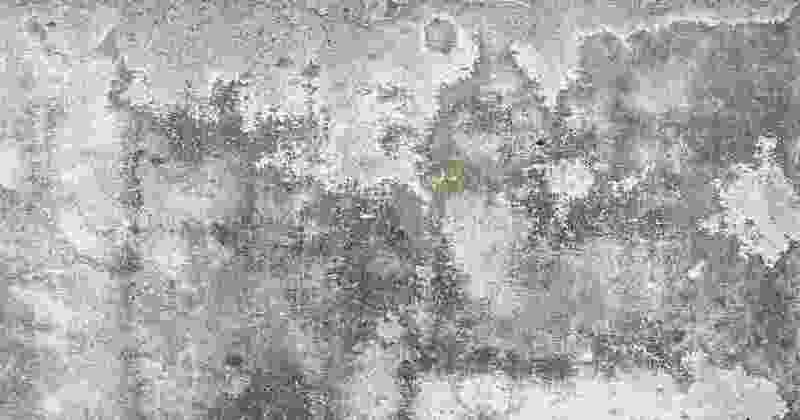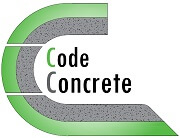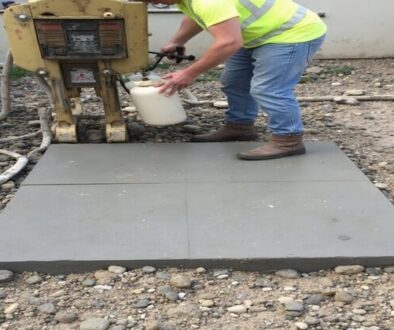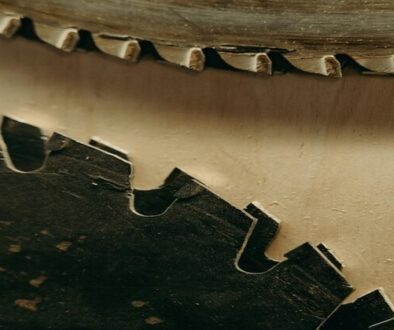Efflorescence in Concrete: Causes, Prevention, & Remediation

Last updated on July 19th, 2025
Introduction
Efflorescence is a common but often misunderstood issue in concrete structures. It appears as a white, powdery deposit on the surface of concrete and masonry, detracting from aesthetics and sometimes indicating deeper problems within the material. While efflorescence is generally harmless to structural integrity, its presence can raise concerns about water infiltration, material quality, and long-term durability.
This comprehensive guide explores the science behind efflorescence, its causes, prevention methods, and effective remediation strategies. By the end of this post, you’ll have a clear understanding of how to identify, manage, and prevent efflorescence in concrete structures.
Table of Contents
- What is Efflorescence in Concrete?
- The Science Behind Efflorescence
- Primary Causes of Efflorescence
- Common Types of Efflorescence
- How to Identify Efflorescence
- Effects of Efflorescence on Concrete Structures
- Preventing Efflorescence in New Construction
- Remediation and Cleaning Methods
- Myths and Misconceptions About Efflorescence
- Case Studies: Real-World Examples
- Conclusion
1. What is Efflorescence in Concrete?
Efflorescence is a crystalline deposit of salts that forms on the surface of concrete, brick, stone, or mortar when water-soluble salts migrate to the surface through capillary action and evaporate. The result is a white, powdery or fluffy residue that can appear unsightly on walls, floors, and other concrete surfaces.
Key Characteristics of Efflorescence:
- Appearance: White, gray, or yellowish powdery deposits.
- Texture: Can be easily brushed off in some cases but may require cleaning in others.
- Location: Typically found on exposed surfaces, joints, and areas prone to moisture exposure.
While efflorescence in concrete itself does not compromise structural integrity, persistent occurrences may indicate moisture problems that could lead to more severe issues like freeze-thaw damage or corrosion of embedded steel reinforcement.
2. The Science Behind Efflorescence in Concrete

Efflorescence occurs due to a combination of three primary factors:
- Water Presence: Moisture must be present to dissolve and transport salts.
- Soluble Salts: Concrete contains naturally occurring salts (e.g., calcium, sodium, potassium).
- Migration and Evaporation: Water carrying dissolved salts moves through capillaries in the concrete and evaporates, leaving salt deposits behind.
Chemical Reactions Involved
When water reacts with calcium hydroxide (a byproduct of cement hydration), it forms calcium carbonate (a primary component of efflorescence):
Ca(OH)₂ + CO₂ → CaCO₃ + H₂O
Other salts, such as sulfates and chlorides, may also contribute to efflorescence depending on environmental conditions.
3. Primary Causes of Efflorescence
Efflorescence in concrete can stem from multiple sources, including material composition, environmental factors, and construction practices.
A. Material-Related Causes
- High Alkali Content in Cement: Some cement types contain higher levels of soluble salts.
- Contaminated Aggregates: Sand or gravel with salt content can introduce efflorescence-causing minerals.
- Admixtures and Additives: Certain water-reducing or accelerating admixtures may increase salt content.
B. Environmental Factors
- Moisture Exposure: Rain, groundwater, or condensation can dissolve and transport salts.
- Temperature Fluctuations: Freeze-thaw cycles can exacerbate salt migration.
- Humidity and Evaporation Rates: High humidity slows evaporation, reducing efflorescence, while rapid drying increases it.
C. Construction Practices
- Poor Drainage: Water pooling near foundations increases moisture exposure.
- Inadequate Curing: Improper curing allows excess moisture retention.
- Lack of Waterproofing: Absence of sealants or vapor barriers promotes moisture penetration.
4. Common Types of Efflorescence in Concrete
Efflorescence can be categorized based on its origin and persistence:
A. Primary Efflorescence
- Forms during the initial curing phase of concrete due to excess water evaporation.
- Typically less severe and may diminish over time.
B. Secondary Efflorescence
- Occurs after construction due to external moisture intrusion (e.g., rain, groundwater).
- More persistent and may require intervention.
C. Cryptoflorescence
- Salts crystallize beneath the surface, causing spalling or scaling.
- More damaging than surface efflorescence.
5. How to Identify Efflorescence
Distinguishing efflorescence from other defects (e.g., mold, calcium leaching) is crucial for proper remediation.
Visual Inspection
- Color: White or light gray (mold tends to be green or black).
- Texture: Powdery and dry (unlike mold, which may feel slimy).
Water Test
- Spray a small amount of water on the deposit.
- If it dissolves, it’s likely efflorescence (mold will not dissolve).
Chemical Testing
- A diluted acid (e.g., vinegar) will cause efflorescence to bubble due to carbonate reaction.
6. Effects of Efflorescence on Concrete Structures
While efflorescence is mostly cosmetic, prolonged exposure can lead to:
- Aesthetic Degradation: Unsightly stains that reduce curb appeal.
- Surface Spalling: Cryptoflorescence can cause concrete to flake or chip.
- Misdiagnosis of Other Issues: May mask underlying moisture or salt corrosion problems.
7. Preventing Efflorescence in Concrete
Prevention is more effective than remediation. Here’s how to minimize efflorescence in new builds:
A. Material Selection
- Use low-alkali cement and clean, salt-free aggregates.
- Opt for efflorescence-resistant masonry products.
B. Construction Best Practices
- Ensure proper slope and drainage away from structures.
- Use vapor barriers and waterproofing membranes.
- Allow adequate curing time to reduce residual moisture.
C. Protective Coatings

- Apply penetrating sealers to reduce moisture absorption.
- Use breathable coatings to allow trapped moisture to escape.
8. Remediation and Cleaning Methods
If efflorescence appears, several cleaning techniques can remove it:
A. Dry Brushing
- Use a stiff brush to remove loose deposits (not always effective for hardened salts).
B. Water Washing
- Pressure washing can help, but excessive water may worsen the problem.
C. Chemical Cleaners
- Acidic Cleaners (e.g., muriatic acid): Effective but require careful handling.
- Neutral pH Cleaners: Safer for delicate surfaces.
D. Preventive Re-treatment
- After cleaning, apply a sealer to prevent recurrence.
9. Myths and Misconceptions About Concrete Efflorescence
Myth: “Efflorescence means the concrete is defective.”
Truth: It’s a natural phenomenon, not necessarily a sign of poor quality.Myth: “Sealing alone will prevent efflorescence forever.”
Truth: Sealers help but must be reapplied periodically.Myth: “All white deposits on concrete are efflorescence.”
Truth: Other issues (e.g., calcium leaching, alkali-silica reaction) can mimic efflorescence.
10. Case Studies: Real-World Examples
1: Residential Driveway Efflorescence
- Problem: White deposits appeared months after installation.
- Solution: Cleaned with mild acid wash and applied a penetrating sealer.
- Outcome: No recurrence after improving drainage.
2: Commercial Building Facade
- Problem: Persistent efflorescence due to rising damp.
- Solution: Installed a capillary barrier and used hydrophobic coatings.
- Outcome: Significant reduction in efflorescence.
11. Conclusion
Efflorescence is a common but manageable issue in concrete structures. Understanding its causes and prevention methods is essential for maintaining durable and visually appealing construction. While it rarely affects structural integrity, persistent efflorescence should prompt an investigation into moisture sources and material quality.
By following best practices in material selection, construction techniques, and maintenance, efflorescence can be minimized or eliminated, ensuring long-lasting and aesthetically pleasing concrete surfaces.
Key Takeaways:
- Efflorescence is caused by water-soluble salts migrating to the surface.
- Prevention is better than cure—proper drainage, curing, and sealing are critical.
- Cleaning methods vary from dry brushing to chemical treatments.
- Persistent efflorescence may indicate deeper moisture issues needing professional assessment.
By staying informed and proactive, builders and homeowners can effectively manage efflorescence and preserve the beauty and durability of concrete structures.




